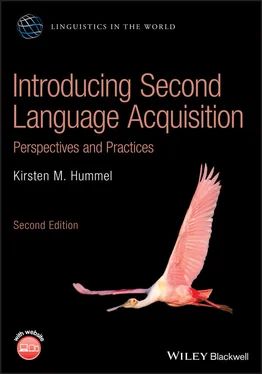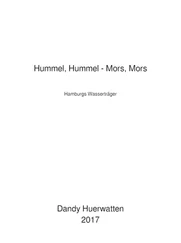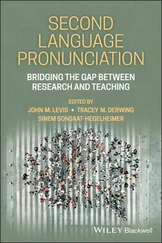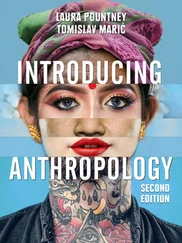Subjects: LCSH: Second language acquisition.
Classification: LCC P118.2 .H86 2020 (print) | LCC P118.2 (ebook) | DDC 418.0071–dc23
LC record available at https://lccn.loc.gov/2020020366LC ebook record available at https://lccn.loc.gov/2020020367
Cover Design: Wiley
Cover Image: © KenCanning/Getty Images
To the memory of my father Louis E. Hummel
This second edition of Introducing Second Language Acquisition: Perspectives and Practices has been undertaken in order to update and expand on topics presented in the first edition. Research in the field of second language acquisition (SLA) is growing at an exponential pace and regular updating of what we know about aspects of SLA is warranted.
While the basic structure of this edition conforms to that of the first edition, one major difference in response to reviewer suggestions is the division of the previously quite large chapter on Theoretical Perspectives into two separate chapters: “Theoretical Perspectives: Past and Present” and “Theoretical Perspectives: Cognitive Approaches.” This division should allow for a better pacing of presentation of this theoretical content.
In addition, to a considerable extent, each original chapter has been updated to reflect current research and practices. An example of considerable chapter expansion is that of Chapter 7, “Second Language Development,” which now includes separate subsections on “reading” and “writing” within the section on “The Development of Literacy‐Based Skills.” Another example is Chapter 10, “Bilingualism,” which is now titled “Bilingualism and Multilingualism” to reflect the ongoing considerable research attention drawn to situations of language acquisition and use of three or more languages.
An added feature at the beginning of each chapter is the presentation of concise “‘Learning objectives.” Also, additional “Language learning in practice” textboxes have been created or expanded throughout the book to allow more concrete examples of aspects of language learning. Illustrative tables have been added in some chapters. Furthermore, the supplemental material at the end of each chapter has been updated, with the addition of self‐assessment questions, and updating and additions to the further reading and viewing suggestions. The rapid increase in web resources allows substantial updating of viewing material in particular. The fictional characters and their trajectories remain in the text as examples of language learners in various language learning contexts. The book continues to highlight occasional cartoons to add artistry and humor to the text.
Despite efforts to update content, due to the rapid ongoing expansion of research in the field, along with space limitations, inevitably some recent findings may not have found their way into the book. Similarly, space restrictions limit the extent to which a number of issues could be examined at length; I hope the further reading and viewing recommendations go some way toward allowing a more in‐depth understanding of those issues.
I am very grateful to the staff at Wiley for their impeccable skill and constant support throughout the development of this second edition: Tanya McMullin, commissioning editor, for her assistance from the beginning of this latest project and for her consistently helpful guidance; Mohan Jayachandran, project editor, for his diligent help throughout this process; Merryl Le Roux, senior editorial assistant, for her help including advice for the cover artistry; Rachel Greenberg, commissioning editor during the later part of production; and Belle Mundy for her attentive copy editing expertise.
For this second edition, I want to continue to acknowledge my thanks to scholars who offered advice for the first edition: Carol Chapelle, Joseph Galasso, Nicholas Groom, Shaozhong Lui, and Sebastian Rasinger. A special thanks goes to Michel Paradis for his careful reading and characteristically perceptive feedback, and to Nick Ellis for reading a section relating to his expertise for that edition. I also want to thank colleagues, Barbara Bacz, Leif French, and Susan Parks, for their generous feedback and pointed advice. The thoughtful remarks and advice from all these scholars were enormously helpful in developing the first edition. Gratitude goes as well to Robert DeKeyser who generously offered advice on the section “Skill Acquisition Theory” in this new edition. I hope I have not misinterpreted or poorly conveyed the advice these many individuals have offered, but if so, the fault lies with me alone. I also wish to acknowledge the native‐speaker advice and intuitions of Mariem Boukadi, Zélie Guével, Khader Jum'a, Ivan Maffezzini, Hongling Wang, and Vera Sarić. I also owe thanks to the artistry of the cartoonists, and in particular to Rod Maclean, Terry Mosher, and John Crowther, as well as to Carla Romanelli Crowther, all of whom generously gave permission to use cartoons in this second edition. I am grateful to François Grosjean for taking the time to provide an updated citation. I also thank Sharif Alghazo who spotted text errors that needed fixing from the first edition, as well as three anonymous reviewers who gave suggestions for this revised edition. I hope I have adequately addressed their thoughtful remarks for improvements.
I continue to owe a wealth of gratitude to the second language research community. The published material that second language scholars have produced has been an endless source of knowledge and inspiration.
The many students enrolled in my courses at Laval University deserve special thanks. The comments and questions of each undergraduate and graduate cohort over the years have been fundamental in providing invisible guidelines behind the scenes, for both the first edition and this second edition, of what I hope is an accessible and accurate overview of the field of second language acquisition.
A big personal thank you goes to my favorite balanced bilinguals, my two daughters, Louissa and Marlyse. Finally, I am grateful for the legacy of both my parents; special gratitude goes to my father, Louis Hummel, in memory of his unwavering support and for generously sharing with me his passion for languages and language learning from my earliest years.
About the Companion Website
This book is accompanied by a companion website:
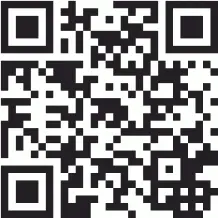
www.wiley.com/go/hummel_2e
The website includes:
Flashcards
Self-Assessment Questions
Glossary
Video Links
1 Introduction 
Welcome to this introduction to second language acquisition (SLA). What is SLA? In brief, this term refers to beginning the learning of another language after a first language (L1) has been acquired.
Note that opinions vary about what might be considered the earliest age from which second language (L2) learning would be differentiated from simultaneous language acquisition or bilingual L1 acquisition (two languages learned at the same time). In general, however, SLA describes learning another language after the early years of childhood. (Note that the importance of age in acquiring another language will be discussed in Chapter 8, and issues related to bilingual acquisition and bilingualism will be discussed in Chapter 10.)
Second language acquisition (SLA) is a phenomenon found among people from all parts of the world and all walks of life. The well‐known biblical story about the Tower of Babel is one of the earliest references to the importance and urgency of knowing another language. According to the biblical account, in order to prevent people from cooperating in their goal of building a tower in the town of Babel that would reach heaven, God commanded “Go to, let us go down, and there confound their language, that they may not understand one another's speech.” The tactic was successful and different language groups abandoned their project and moved to separate areas of the world.
Читать дальше
